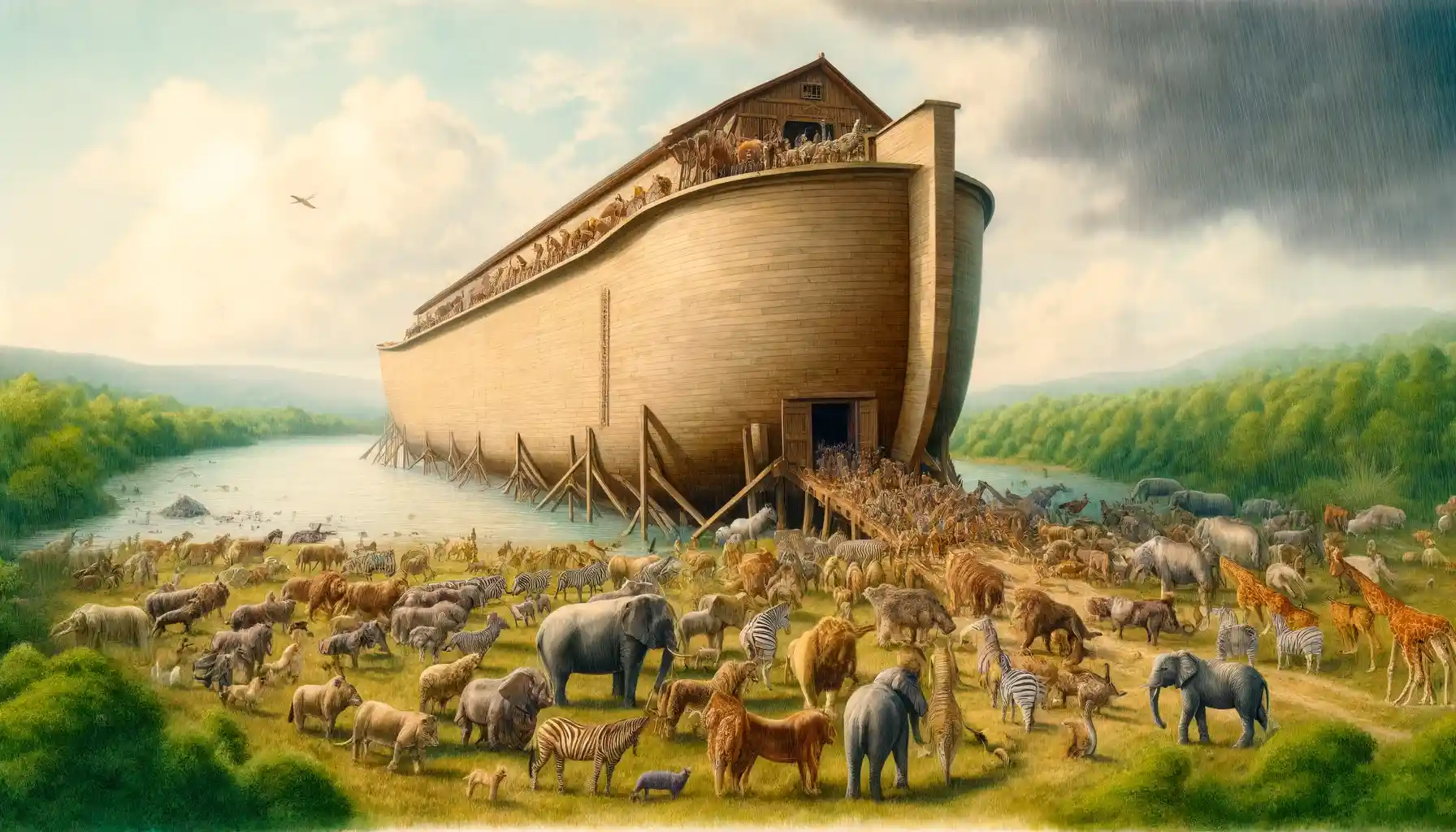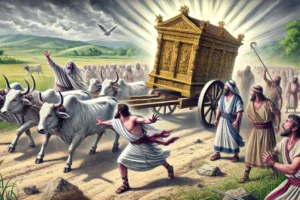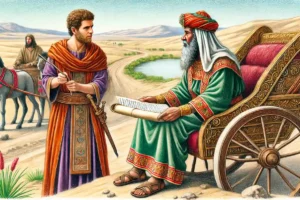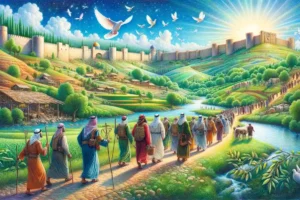
Noah’s Ark and the Flood
Noah’s Ark and the Flood is a foundational story in the Book of Genesis, chapters 6 through 9. It tells of God’s decision to cleanse the earth of its corruption and violence through a great flood, sparing only Noah, his family, and representatives of all animal species who were sheltered in a massive ark built by Noah under divine instruction.
Short Quick Facts:
- God’s Grief: God was saddened by the wickedness and corruption on Earth and decided to wipe out humanity and animals, except for Noah, his family, and the animals on the ark.
- Noah’s Righteousness: Noah was chosen because he was a righteous man, blameless among the people of his time, and he walked faithfully with God.
- Ark Specifications: The ark was large, measuring about 300 cubits long, 50 cubits wide, and 30 cubits high, made of gopher wood and sealed with pitch.
- Animal Pairs: Noah was instructed to bring into the ark pairs of all creatures, both clean and unclean, to keep their species alive.
- The Flood Duration: The flood lasted for 40 days and nights, but the waters flooded the earth for 150 days before receding.
- Noah’s Sacrifice: After exiting the ark, Noah built an altar to the Lord and offered burnt offerings, which were pleasing to God, leading to a covenant where God promised never to destroy all life with a flood again.
- Sign of the Covenant: The rainbow was established as a sign of this everlasting covenant between God and all living creatures.
The story of Noah’s Ark and the Flood in Genesis 6-9 is rich with theological insights and cultural significance, serving as a pivotal narrative in biblical literature. Here’s a detailed analysis of the context, theological insights, and informative content of this subject:
Contextual Background
The narrative is set in a time when the earth was filled with violence and corruption. Humanity’s moral decay prompts God to decide to reset creation to its original purity. Noah is introduced as a counterpoint to the prevailing wickedness, described as a righteous and blameless individual who walked with God. This contrast underscores the biblical theme of divine retribution balanced with mercy.
Theological Insights
- Divine Judgment and Mercy: The Flood represents divine judgment on a corrupt world, but simultaneously, the story of Noah highlights God’s mercy and provision for redemption. Noah’s preservation marks a dual narrative of judgment for evil and grace for the righteous.
- Covenant Theology: Post-Flood, God makes a covenant with Noah, promising never to destroy all life with water again, symbolized by the rainbow. This covenant is significant as it establishes a recurring biblical theme of God’s binding agreements with humanity, which later include the Abrahamic, Mosaic, and New Covenant through Christ.
- Human Responsibility: Noah’s role is not passive. His active obedience in building the ark, gathering the animals, and maintaining the ark’s inhabitants for over a year demonstrates the biblical principle that human agency and divine sovereignty coexist. Noah’s faith and actions exemplify the partnership required in God’s plans.
- Renewal and Recreation: After the waters recede, Noah’s first act is to build an altar and make sacrifices, which were pleasing to God. This act of worship signifies human gratitude and the need to honor God post-deliverance, setting a precedent for worship in the biblical narrative.
- Symbolism of Water and Ark: Water in biblical symbolism often represents chaos and judgment (e.g., the crossing of the Red Sea, Jesus calming the storm). In contrast, the ark represents salvation and the presence of God amidst chaos, a precursor to the concept of the Church as a refuge for believers.
Informative Content
- Historical and Cultural Relevance: The Flood narrative has parallels in other ancient Near Eastern cultures, such as the Epic of Gilgamesh, which also features a flood and a boat-building hero. These similarities highlight the widespread motif of a great flood across different cultures, suggesting a shared memory or cultural exchange.
- Literary Structure: The detailed instructions for building the ark and the specific numbers and timelines used (e.g., forty days of rain, 150 days of water prevailing) emphasize the precision and reliability of God’s instructions and the importance of obedience to them.
- Environmental and Animal Conservation: The story is also one of the earliest references to biodiversity conservation, with Noah saving every kind of animal species. This aspect underscores the biblical mandate for humans to care for creation as stewards.
Conclusion
Noah’s Ark and the Flood story encapsulates themes of judgment, salvation, obedience, and renewal, which resonate throughout the biblical text and provide deep insights into the character of God and His expectations for humanity. This narrative invites readers to reflect on the balance of justice and mercy, the importance of faithful obedience, and the promise of divine preservation and renewal.



